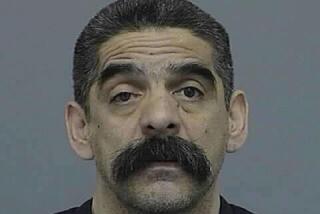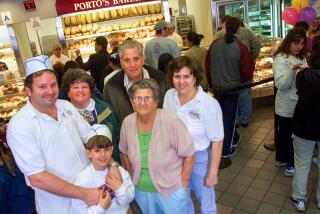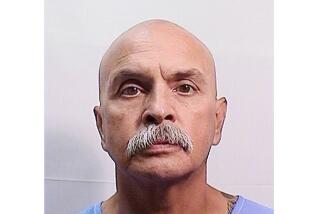Emerging From the Shadow of an Icon
- Share via
GUANTANAMO BAY, Cuba — A lifelong understudy, Raul Castro takes center stage in Cuba as a man defined more by his contrasts with his iconic older brother than by his own performance: methodical where Fidel Castro is impulsive, awkward in public where Fidel shines in the spotlight, approachable where Fidel has intimidated.
Chroniclers of the Cuban revolution paint a portrait of the acting president as a man at once compassionate and ruthless, more sensitive and family-oriented than Fidel, yet adept in the role of executioner, at least in the early, violent days of their revolution half a century ago.
Historians also note that, unlike his brother, the 75-year-old Raul has moderated and moved with the times, embracing modest economic reforms that his brother rejected.
In his 2005 biography of the Castro brothers, “After Fidel,” former CIA Cuba analyst Brian Latell describes the younger Castro as so overshadowed as to be often underestimated.
It was Raul Castro who steered Cuba down the path of Marxism-Leninism, he points out, drawn into the Stalinist fold during a 1953 socialist youth conference in Vienna.
It was also the younger Castro who first met Ernesto “Che” Guevara, the charismatic Argentine doctor-cum-leftist radical who was often to supplant Raul as the revolution’s No. 2 until Guevara’s death in 1967 fighting a doomed rebel cause in Bolivia.
And it was the heir apparent who negotiated lucrative and strategic support from Moscow, including his July 1962 Kremlin visit that secured a Soviet promise to deploy medium-range missiles to the island, a move that brought the world to the brink of nuclear conflagration three months later.
As defense minister, Raul Castro built a formidable army that defeated U.S. forays, including the bungled 1961 Bay of Pigs invasion and the airspace intrusions of radical exiles in the late 1990s.
The strongest institution in the country, the Cuban military has never suffered an internal upheaval or engendered a coup attempt. Only one senior officer has ever defected.
Raul Castro’s staunch Marxist beliefs and fierce anti-American rhetoric have softened in the years since the Soviet Union’s demise and the devastating cutoff of oil and subsidies from Cuba’s erstwhile communist benefactors.
Compelled to self-sufficiency during the withering “Special Period in Peacetime,” as the harsh years of the early 1990s were known, he deployed his forces to foreign-financed joint ventures that kept the country fed and brought in hard-currency investment. Today, the Cuban military is responsible for two-thirds of the country’s convertible revenue.
The younger Castro has been openly admiring of the “Chinese model,” under which a strong autocracy remains in control while permitting some private enterprise.
Some who have met the bespectacled man describe him as markedly different from a sibling who has been the embodiment of the revolution.
“My sense is that Raul knows he lacks the popular support of Fidel and has gone about cultivating a new generation of leadership to whom he would quickly turn over control” if and when he becomes permanent head of state, said Glenn Baker, director of the U.S.-Cuba Cooperative Security Project at the Center for Defense Information in Washington.
Baker, who met with both Castros during a 2003 Havana visit, said Raul was “as jovial and personal as his older brother was imperial and humorless.”
Retired U.S. Army Gen. Barry R. McCaffrey, who met the Castro brothers four years ago, said he found Raul “much more grounded” than his brother, who dominated their several hours of conversation.
“Raul struck me as rational, calmer. He’s a tough thug with a sense of humor,” McCaffrey recalled.
Raul Castro Ruz was born June 3, 1931, in the remote village of Biran in the “Wild East” of what was then Oriente province. He was the sixth of nine children eventually acknowledged by Angel Castro. His mother was Lina Ruz, a servant whom the Spanish emigre took up with while married to the mother of his first two children.
Fidel Castro’s legions of biographers have often paid notice to “rumors too consistent to be ignored” that Raul was fathered by someone other than Angel Castro. The most persistent of the stories held that his father was a Rural Guard captain named Felipe Mirabal who was posted near the Castro homestead in the early 1930s.
Leycester Coltman’s 2003 book, “The Real Fidel Castro,” recounted how Mirabal was rounded up and condemned to death along with other officers of deposed dictator Fulgencio Batista’s army after the 1959 triumph of the revolution but was never executed. Mirabal intimated to others in prison that the reports of his relation to Raul Castro were true, the biographer wrote.
Raul Castro followed in Fidel’s footsteps throughout his life, first to the prestigious La Salle school in Santiago de Cuba, from which they were expelled for disruptive behavior, then to the Belen Academy run by Jesuits, at which Fidel Castro flourished but his younger brother flunked out. He returned to the family property, working in Angel Castro’s construction and plantation operations, where he took up drinking and gambling on cockfights -- vices said to still stalk him.
Raul Castro’s role in the revolution’s doomed overture, the July 26, 1953, attack on the Moncada military barracks near Santiago de Cuba, landed him in the Isle of Pines prison after the debacle in which more than 100 rebels were killed or captured.
A May 1955 general amnesty freed the Moncada attackers, and Raul Castro fled to Mexico City to organize training for another assault. There he met Guevara, with whom he shared a deep ideological commitment to armed revolution for the Marxist cause.
The softness and sensitivity of his youth ground down by prison and exile, Raul Castro served as his brother’s chief procurer and enforcer, alleged to have coldbloodedly executed recruits accused of betraying the revolution or wavering in commitment.
The Castro brothers and their guerrilla band returned to Cuba on Dec. 2, 1956, deploying to mountain strongholds to wage what would prove a two-year insurgency.
Fidel led the Sierra Maestra campaign, while Raul built up a larger rebel contingent in the Sierra Cristal, a testament to the organizational skills that would serve him throughout his career as founding father of the Revolutionary Armed Forces.
After the New Year’s Day 1959 triumph of the revolution, Raul took up his traditional role as Fidel’s top lieutenant and, within days of the rebel army’s arrival in Havana, married fellow revolutionary Vilma Espin, who had operated under the code name Deborah. They had one son and three daughters, and Espin has remained active in the political hierarchy.
As reclusive as his sibling was drawn to the limelight, Raul Castro has made few public appearances, given only a handful of interviews and often disappeared for months or even years.
“Every so often a rumor gets started that I died,” he quipped to Cuban journalists when he surfaced in December 1991 after a long absence.
“During the Pan-American Games, they were saying I was being kept in a freezer.”
*
Begin text of infobox
The other Castro
Name: Raul Castro Ruz.
Title: First vice president of the Council of State and Council of Ministers, minister of the Revolutionary Armed Forces, second secretary of the Communist Party of Cuba.
Born: June 3, 1931, in what was then Oriente province, sixth of nine children.
Education: Attended Roman Catholic schools and studied administration at the University of Havana.
Before the revolution: Joined older brother Fidel Castro in efforts to topple President Fulgencio Batista. Both were arrested and freed in amnesty. Surviving rebels grouped in Mexico, then returned to Cuba in 1956. Raul established a front in the eastern mountains and eventually led 4,000 men.
After the revolution: Fidel Castro quickly designated him his heir. Rising steadily through the political ranks, he was heavily involved in Cuba’s military alliance with the Soviet Union and the dispatch of tens of thousands of troops to Africa in 1970s. When the Soviet Union collapsed, he oversaw the military’s switch to new domestic and economic missions.
Family: Married to Vilma Espin, who fought alongside him. They have four children. Espin often officiates with Fidel Castro at state occasions.
*
Source: Associated Press
Los Angeles Times
More to Read
Sign up for Essential California
The most important California stories and recommendations in your inbox every morning.
You may occasionally receive promotional content from the Los Angeles Times.











